Morocco’s traditional crafts combine influences and elements from a number of different cultures and societies.
There are aspects from age-old Berber traditions, Moorish elements from Andalusia, Arab influences, Jewish impacts, and influences from Europe, particularly from nations that once had colonial powers in Morocco such as France, Spain, and Portugal.
Many crafts use local resources, like wood, stone, clay, leather, wool, and metals, though you’ll also find items that use imported items such as silk and marble.
Common designs include geometric shapes, Arabic calligraphy, and things from nature.
Artisan skills and techniques are commonly passed down through the generations, either from father to son or in a master and apprentice scenario.
An artisan master is called a maalem. Morocco works hard to ensure that traditional processes and techniques don’t die out, and there are various government initiatives to promote various crafts and their survival.
Crafts can be seen in Moroccan architecture, homewares, textiles, clothing, and decorative items, among other places.
Table of Contents
Zellige

Zellige is a type of tile work that is often referred to as the Moroccan mosaic. Zellige dates back to at least the 700s and is a highly skilled craft.
Colored ceramic tiles are chiseled into tiny shapes and then set into plaster to create stunning designs.
A high level of precision is required, both with the shaping of the pieces and with the setting into plaster.
Zellige designs are used as ornamentation on floors and walls, as well as on pillars, fountains, and other surfaces.
The geometric designs are eye catching and they feature in almost any building of note, including mosques, palaces, and madrasas.
Gorgeous examples of zellige are also often seen in traditional historic riads and hammams. The city of Fez is the home of zellige.
Metalwork
Morocco’s artisans create a wealth of stunning items from metal, using various metals and techniques. From larger items of furniture to small accessories and decorative items, you’ll find many gorgeous metal objects in Morocco.
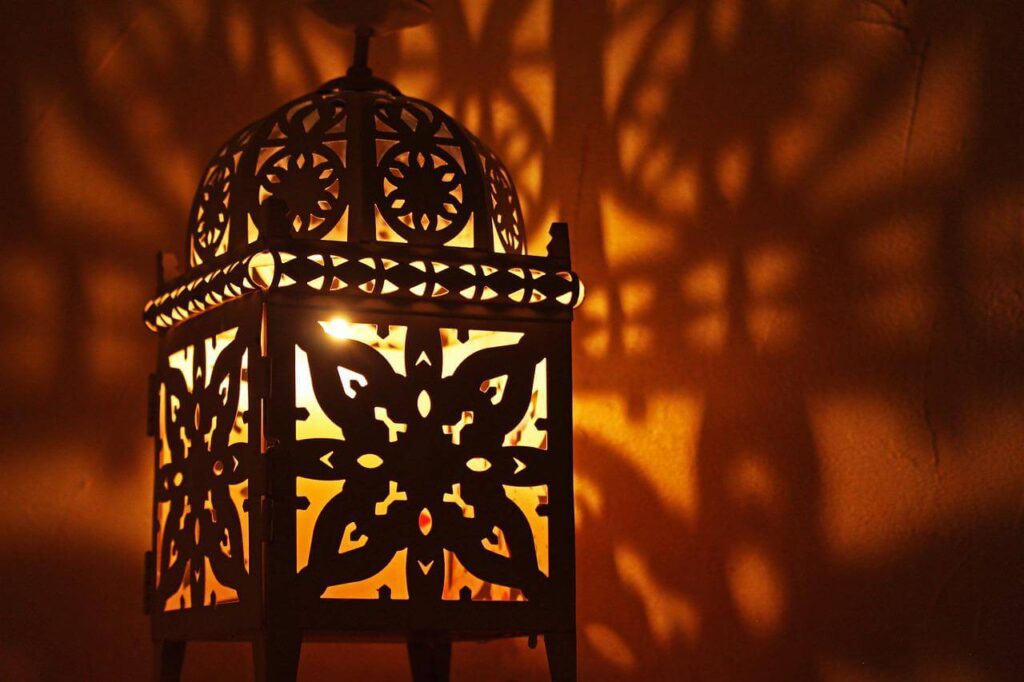
Examples include lanterns and lamps, tea pots, trays, candle holders, frames, tables, and chairs. Copper and brass are two of the most commonly used metals.
Finely hammered details add to the aesthetic appeal, and zellige tiles may be set into pieces for further effect.
Buildings may have impressive doors that feature heavy metal knockers and iron nail studs.
Wrought iron details can also be seen on the outside of many buildings, including around windows and balustrades. Spectacular jewelry is made from gold and silver, often inlaid with precious stones.
Pottery
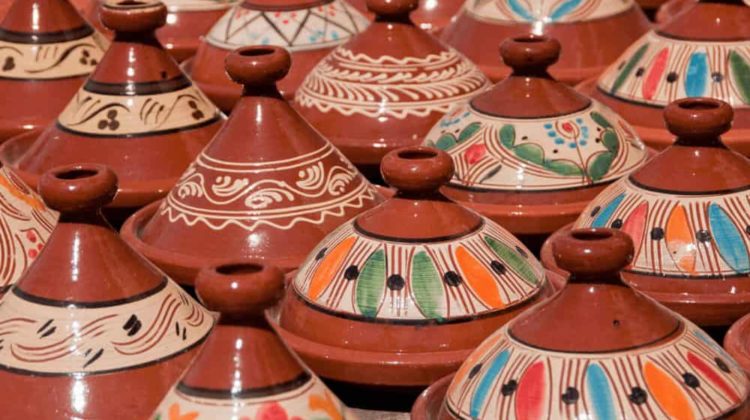
Morocco has long pottery-making traditions, with Fez and Safi especially renowned for their pottery-producing heritage.
Pottery can come in many colors, though blue and white and deep green items are more traditional. Patterns are usually geometric.
Created by hand and then fired and glazed, common items include tagine pots and other cookware, vases, bowls, and plates.
Weaving
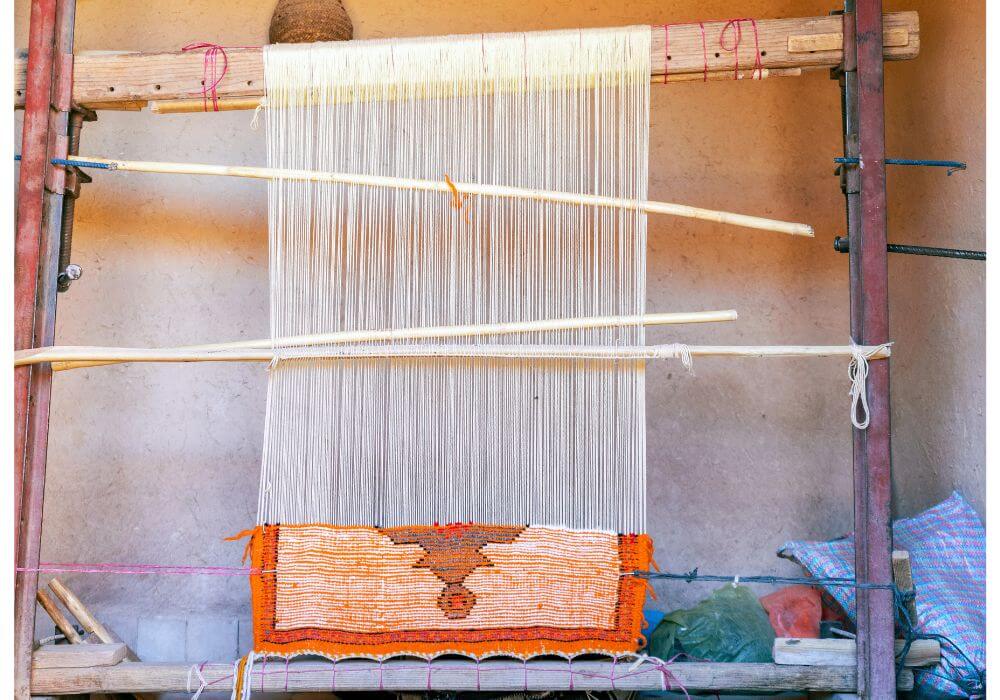
Morocco’s weaving history dates back thousands of years. The nation is known for producing exquisite rugs and carpets, with both Arab and Berber designs and techniques found throughout Morocco.
Different tribal groups have unique styles and it’s said that each individual rug tells a story and hold the memories of its maker.
Rugs are used to cover the floor, as blankets, as saddle rugs, as burial shrouds, as wall hangings, and as warm outer garments.
Carpets are often grouped into two different broad categories: urban and rural.
Urban carpets are typically those produced using Arab techniques in places like Rabat, Fez, and Marrakech. Rural carpets come from Berber tribes in the mountains.
Other woven items may include bags, cloaks, cushion covers, and others.
Embroidery
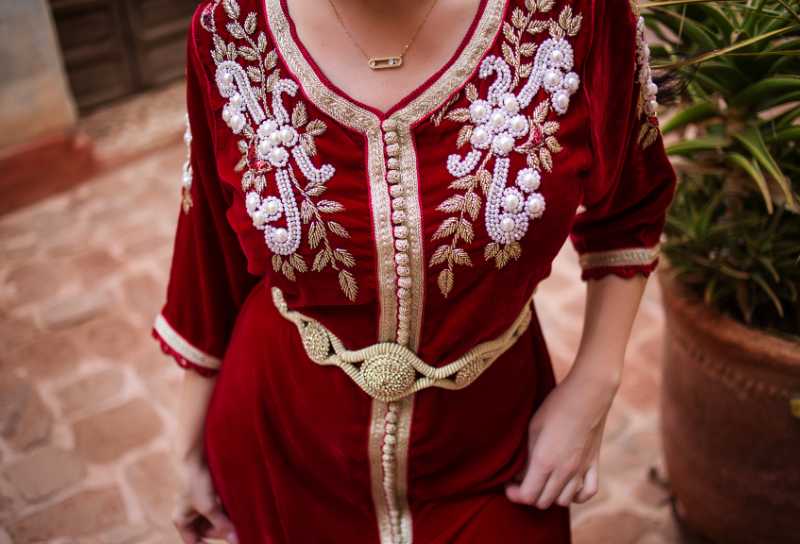
Fez, Meknes, Tetouan, and Rabat are centres for fine embroidery. The practice also has long roots within Berber communities.
Stunning items are created by stitching fine embroidery, including intricate floral and natural designs on clothes, curtain covers, table runners, and wedding garments, to name just a few examples.
Embroidery can be done using any color thread, but the most luxurious items use fine silver or golden thread.
Leatherwork
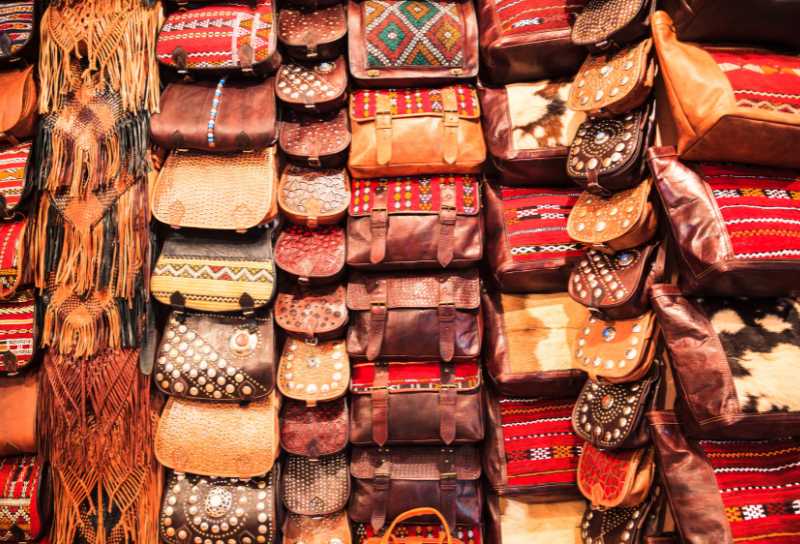
Due to the presence of large tanneries, Fez, Marrakech, and Taroudant are especially known for excellent leather goods.
Tough animal skins are worked and dyed to produce a huge array of items, including shoes, bags, belts, footstools, wallets, saddles, and more.
The traditional shoes, known as babouches, are perhaps among the most unusual leather items in Morocco. These slipper-like shoes are often decorated with colourful embroidery.
Tadelakt
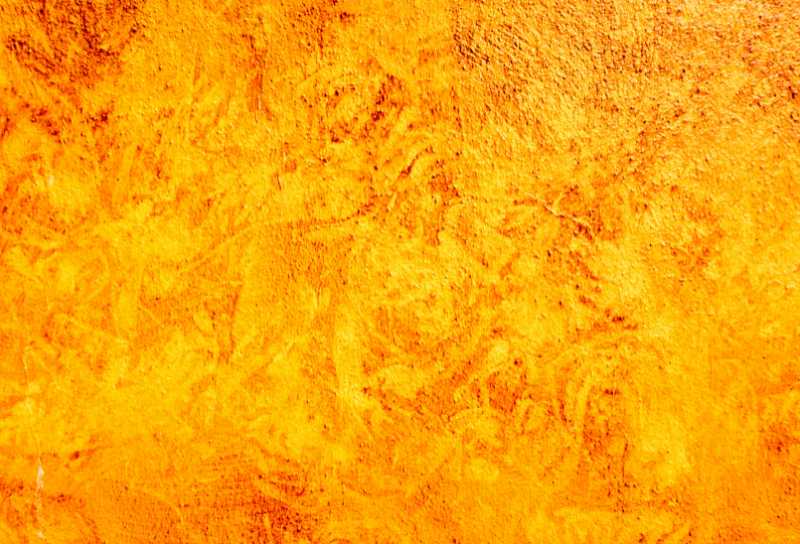
Tadelakt is a type of plaster technique that creates a simple but beautifully smooth and attractive finish. It can trace its history back some 4,000 years.
Originating in the hills near Marrakech, tadalekt was developed by Berber groups in order to seal water storage cisterns.
Today, the velvety finish is commonly used to decorate walls and places that require a waterproof finish, such as pools, fountains, hammams, and sinks.
The technique involves spreading a lime plaster paste on a surface and then polishing it with a river stone.
Natural soap is then used to seal the work. Tadelakt was traditionally red in color, but any pigment can be added to alter the color of the plaster.
Moroccan tadelakt is often said to create one of the most beautiful plasterwork finishes anywhere in the world.
Geps
Also known as stucco, geps is a decorative type of plasterwork. The plaster is usually white, though it could be dyed any colour depending on preferences.
Highly detailed designs are created with the plaster to add beauty to buildings.
Geps is made by spreading a thick layer of wet plaster, which is then cut and shaped before it dries and hardens. The craftsman has to be quick and precise.
The carved plaster is often seen at the top of walls, where they meet the ceiling, on columns, as panels along walls, almost like a divider, around windows and doors, and there may also be large sections of exquisite carved plasterwork.
Geometric designs are the norm and the attention to detail is apparent. The plaster may be painted with bold colours for a more striking effect.
Mashrabiyya
Mashrabiyya is another craft technique that uses wood. It is an open lattice of tiny pieces of wood connected to make patterns.
Common patterns are stars, diamonds, squares, rectangles, and octagons.
The small gaps let light in while affording plenty of privacy. Such technique is often seen on room dividers and window shades. Cedar wood is often used.
Marquetry
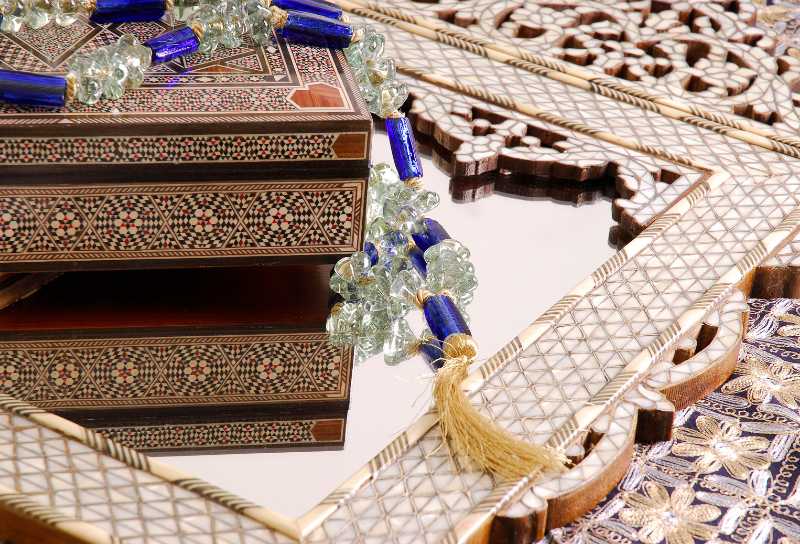
Marquetry is especially common in the coastal town of Essaouira. Using the thuya tree, wood is carved to make beautiful pieces of furniture, such as tables, chairs, and chests, as well as ornamental items like boxes and frames.
Chess sets, toys, and plates are other examples of things that may also be made using marquetry.
Carved pieces are embellished with marquetry, using various woods like ebony, walnut, and citron. Items may be further decorated with fine metal wires, camel bone, and mother of pearl.
In conclusion, Morocco’s traditional crafts elegantly blend diverse cultural influences, showcasing intricate designs and cultural richness.
To fully embrace this heritage, one is encouraged to delve deeper into the world of Moroccan craftsmanship.